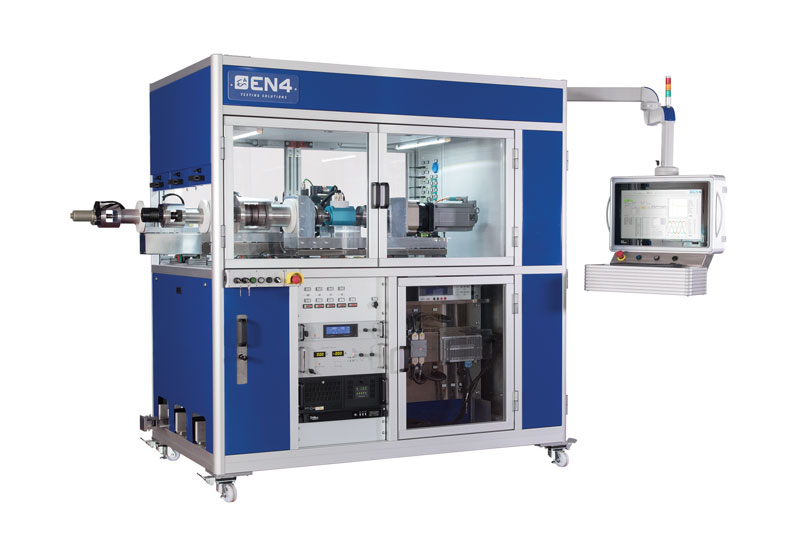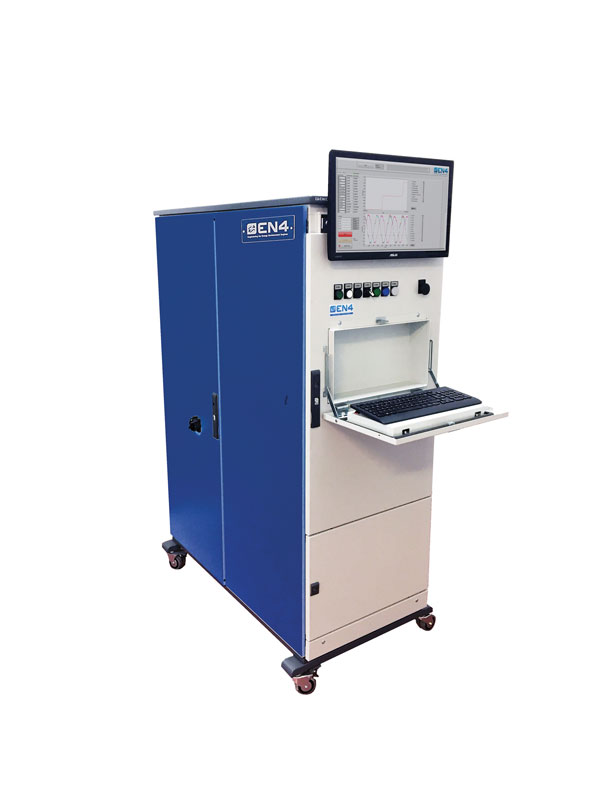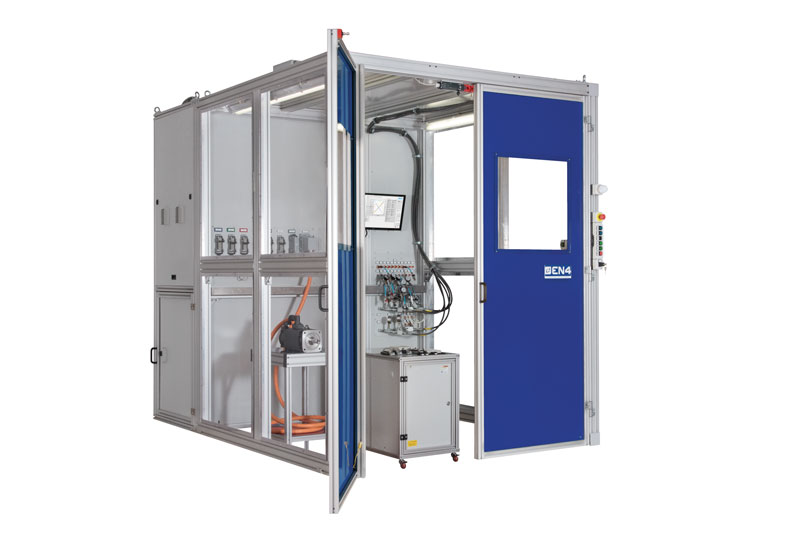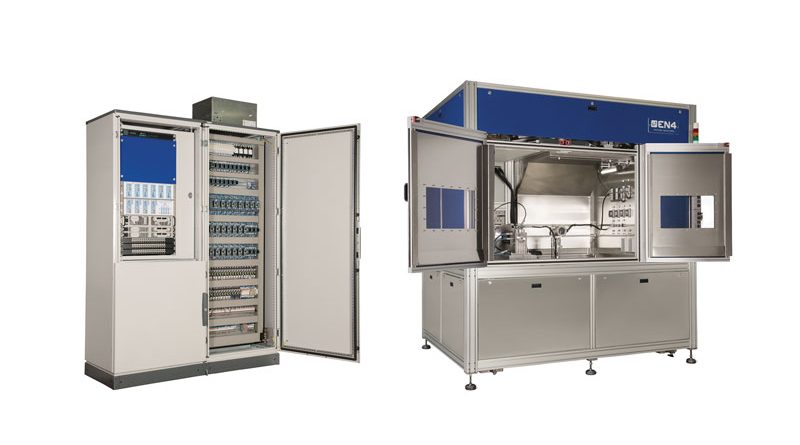Born in the Sign of Testing
Specialized in the testing branch, EN4 follows the entire process of product development in many sectors, and customizes its solutions in order to meet the customer’s needs. In the company’s offer, the endurance systems stand out
The company EN4 was born in 2006 as Academic Spin-off of the University of Perugia. The experience gained in technical research, allowed to get a rigorous and scientific approach to testing issues. EN4 develops test benches for automotive, manufacturing, mechanical, and electromechanical industries, both for R&D and end of line purpose. Following the entire process of product development, from hardware design to prototyping on small scale, from software development to the production of the final solution, the company can customize its products in order to meet the customer’s needs. Among the various applications of EN4, the endurance systems are very important. The company has developed a wide range of models dedicated to this type of test, called 4END, which covers a wide range of products equipped with electric motors: from small DC motors used in automotive auxiliary systems up to great powers electric motors or complex systems such as electrospindles.

A system for characterization and endurance of electric motors. 
A system for endurance of electric actuators. 
A system for endurance and run-in operations of electrospindles.
Endurance test benches’ features
All 4END endurance benches produced by EN4 have common characteristics. First of all, they can be connected to the corporate network, using physical or wireless connections and satisfy all the requirements in an Industry 4.0 context. Thanks to this feature, it is possible to monitor remotely the status of the test, all test parameters and results can be saved within company databases and an alert can be communicated to the users in case of failure during a test. A continuous system of monitoring and check of parameters, during the test phase, allows to preserve the bench and the device under test from any damage. There is the option of run tests in a climatic chamber, that can be controlled directly from the test bench. Communication is with commercial drivers, proprietary drivers or developed ad hoc by EN4.
Test for mechatronic components in the automotive sector
Starting from testing in the automotive industry, the sector in which EN4 started its business, here are the main applications developed. Let’s start with test for automotive mechatronic components such as motorized throttle bodies or actuators equipped with position sensors or smart control units. In this kind of application, a movement profile has been selected, the test bench controls the device under test (DUT) in closed loop on the position or on the current absorbed, following a setpoint defined by a time profile. The position or current profile is repeated for a number of times set by the user. These are some characteristics of this of products. The software, developed internally by the company and fully customizable, can independently check the state of the DUTs and interrupt the endurance test if it detect position or absorbed current values outside the acceptability. It is possible to test up to 20 DUTs at the same time on four independent stations, allowing the use of a single machine to perform durability tests that are independent of each other, both in term of time and for DUT characteristics. Data log up to 1kHz can be activated in the phases of interest of the test; for example in case of fail, the software saves a preset number of cycles that occurred before the unwanted event. The interface is for actuators equipped with analog, SENT or CAN position sensors.
Test benches for electric motors
From the experience gained in automotive, the product line for the mechanical and electrical characterization of electric motors has evolved. Test benches for these applications can be characterized, based on customer requests, by: single control system with different measurement lines with different full scale, for a complete characterization; acquisition up to 500 KHz for a high detail of the electrical quantities; power meter up to six channels for a direct and synchronized measurement of the quantities; automatic torque compensation, for measuring the no-load speed; selectable Field BUS in order to communicate with the driver of the device in test and make the test system compatible with different types of DUT; simulation of the mechanical load (friction and inertia); guided creation of durability tests based on a dedicated interface, which makes it easy to create a very complex test plan, typical of applications dedicated to endurance.
Manufacturing sector applications
Over the years EN4 to expand its business, landing in the testing of devices intended for the manufacturing sector. An example is the use of 4END systems for run-in operations and endurance of electrospindles. In this case, the test bench performs the run-in and quality control procedures at the end of a production line. This stations allows to: perform triaxial vibration tests in order to identify the imbalances in rotating parts of high rotation speed motors; check the component temperature during the test; check the normal operation of all the sensors of the DUT; coupling and uncoupling operation of the spindle; check the efficacy of the DUT cooling system; check the functioning of the DUT communication buses; test all the accessory functions that characterize an electrospindle. The station has an automatic test selection based on a barcode reader. The test bench automatically chooses and performs the test steps and parameterization based on the characteristics of the DUT. During the test, it measures and calculates: temperature, absorbed current, voltage, electricity, speed, vibrations.
The control software is internally developed
EN4 is Silver Alliance Partner of National Instruments. The company internally develops the control software of its test benches using LabVIEW development environment. By using this platform it is possible to divide the structure of each test bench into various sections. In the case of the 4END systems, it is possible to create “Test Plan Editing” zones, where all parameters that characterize the test are identified; “Test” areas dedicated to the monitoring of the test. It is also possible to create manual sections in which the operator has available all the test bench inputs and outputs, for a constant machine monitoring. Thanks to the flexibility of LabVIEW, it is possible to create pleasant and user-friendly interfaces, guided test procedures, also described through images to make the whole operation simpler to go to minimize the possibility of error by the operator. In addition, LabVIEW is an analysis tool that provides, to an expert user, all the information necessary to deepen the phenomena that may occur during the testing phases.

